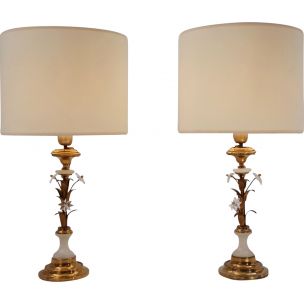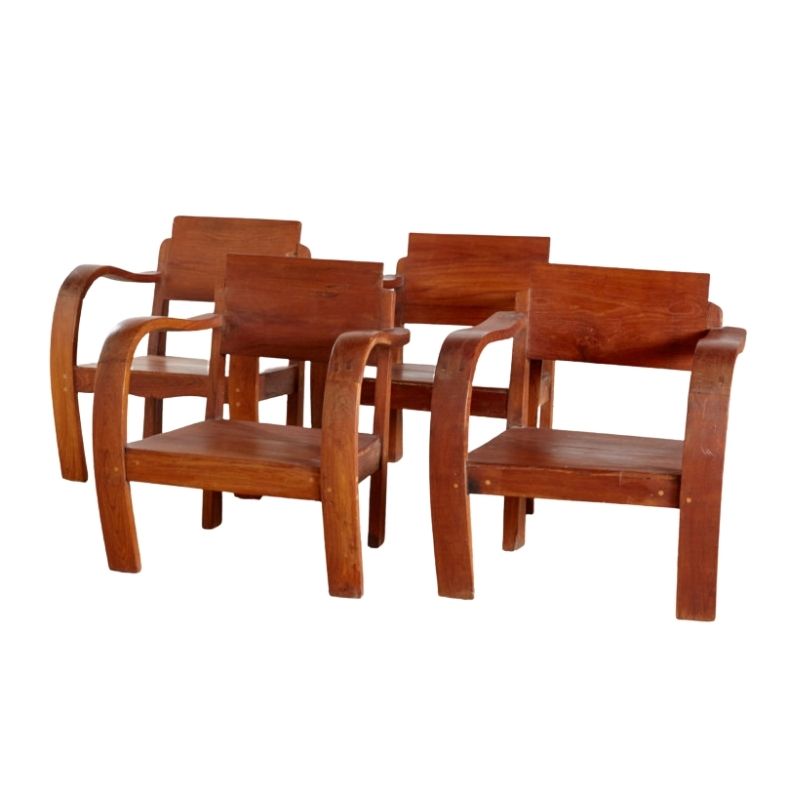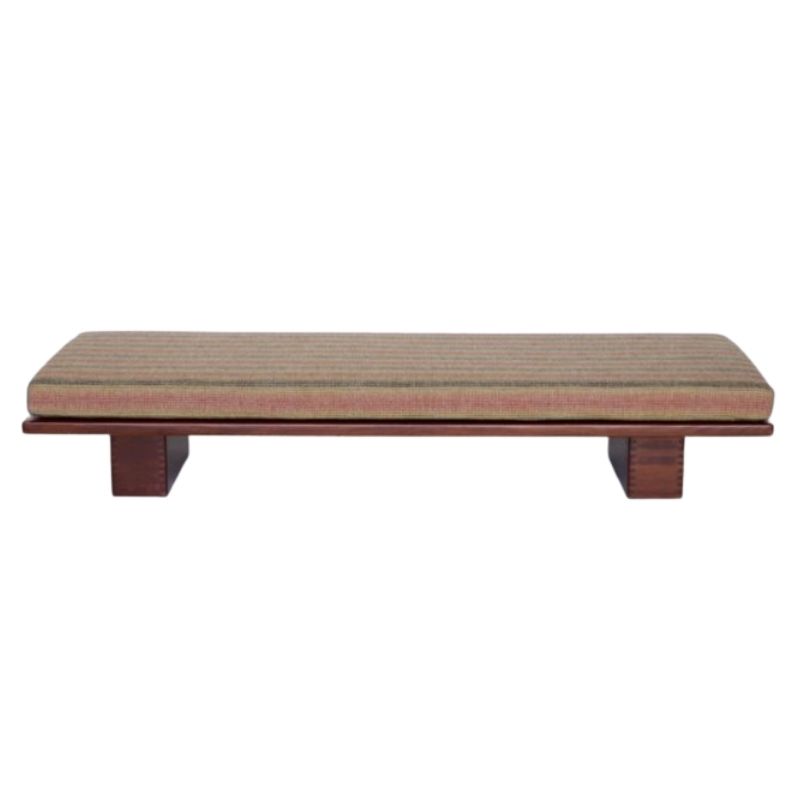.
The first picture looks bookmatched, probably veneer and reminds me of some Lebanese cedar I've got lying around.
I agree the second looks like teak, are the photographs from the same object?
Sorry of course they are I should have read your post. I have seen the occasional timber which can look similar to the teak though.
Because the
object is veneered, it need not be assumed that both sides of the same panel are veneered with the same specie. For proper balance, there need only be an effort to select species that have similar mechanical characteristics (to minimize the chance of warpage).
The second photo is certainly teak. I won't hazard a guess on the first photo, as I am not sufficiently familiar with European species. (The crotch grain, unless employed intentionally for decorative purposes, would be typical of secondary-choice veneer for unseen surfaces -- like the underside of a table ?)
Here is my dilemma...
It's an early Evans production DCW with 5-2-5 bolt config. It was purchased without seeing it in person from an auction house that specializes in traditional antiques. They listed the chair as rosewood. Some days it looks rosewood (especially the underside), some days it looks walnut and some days teak. I know they experimented with more exotic woods in the early days so I'm just not sure. Thanks to everyone who's thrown in their 2 cents. Any additional insights would be appreciated.
Geez
What a grab-bag of veneer ! Note the off-center seam in the back, and the swing grain on both faces of the vertical member (do those "chassis parts" have names, in the Eames vocabulary ?).
Note that the "best" grain -- which I still say looks like teak -- is found on the FACE of the seat, and the REAR of the back. And what I call "secondary" veneer -- with its unfortunate asymmetry -- is found on the FACE of the back.
Was the DCW ever offered in teak ? My book mentions that the DCM was offered in walnut, ash, birch and rosewood. There is no rosewood on this chair, in my opinion.
I am going to posit that the back panel was veneered in reverse -- by accident. Yes, this sort of thing happens in production, from time to time, in any veneering operation in the world.
If so, this chair would be comparable to a postage stamp with an upside-down airplane in the middle -- for instance. In other words, a rarity. And I'd stake a lot on that being the correct explanation for what we see in the photos.
(The alternative explanation is that the maker had a truly "hands-off" policy for selection of veneer, face vs back. That is, there was to be no selection of where a veneer was to be placed, once it was permitted to used -- once it had passed initial inspection. But I'd like to think that this wasn't the case. Such policy could of course have held, for one manufacturer at one period of time, and been altered at a later date.)
"Thanks for bringing it in to Antiques Roadshow. You have a genuine blah blah. It would perhaps fetch, at auction, on a good day, $ XXXXX.00 ! "
"Ohmygod. Ohmygod. Seriously ? Are you serious ? I had no idea. . .!"
Thanks for your thoughts...
Thanks for your thoughts SDR. The DCM was later offered in rosewood etc but not the DCWs or LCWs that I know of. I haven't seen a teak version anywhere but Wright has sold two rosewood DCWs in the past for a whole lot more than a typical walnut or ash version so I want to be sure of the wood type before I let it go.
Also, please note that the chair is much more brown than orangish as the pictures show -- I'm slightly color deficient. 🙂
Could be.
If the photos are too orange, that could be affecting my judgement. But I see so much in that close-up photo, from the typical alternating tri-tone stripes of darker and lighter wood, and even a bit of a wave grain or fiddle-back, that I have sometimes seen in teak.
The distance photos are a bit less convincing of teak.
Anybody think this could be a very early-production example ?
I suppose
it's possible that the whole thing is walnut -- but I'm holding out for other photos before conceding.
I'm also waiting for reaction to my claim that the back of this chair was veneered "backwards."
My book also says that the first DCM chairs had a clear melamine finish, "applied during the molding process." News to me. . . !
If you need any help, please contact us at – info@designaddict.com











